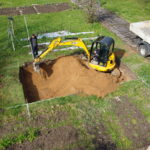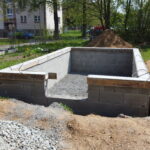
What is Aqua-Reaktor
It is an innovative, technological system that combines well-known and less-researched technologies. In layman’s terms, it combines biogas station, vertical farming, microorganism and fungus farms, plus fish farming.
The concept links these individual technologies into a complete semi-enclosed ecosystem in which the classic not-very-desirable biowaste from towns, parks, farms and family homes could be exploited using a balanced circulation of nutrients. Thanks to it we could produce a wide range of products.

These are: biogas, electricity, heat, biofuels and high-quality fertilisers/growing substrates. At the same time, food of bio-quality is obtained without pesticides, such as vegetables, legumes, salads, etc., mushrooms, fish food, fish and organic oils.
The deeper theory of our project
Our project is formed out of several pre-existing and functional concepts. Which in all cases works, but without fully exploiting the possibilities, that biological waste provides.
To name them all:
Anaerobic bioreactors
are great in using biowaste as a resource for energetic needs via anaerobic decomposing by methane-producing bacteria.
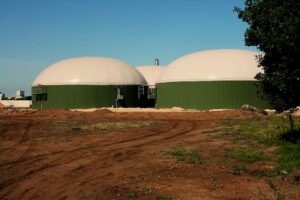
But the digestate from them is rather waste than quality fertilizer in most cases. And the remaining amount of nutrients and organic matter could still have many other ways of using.
The technology can be enhanced by pre-decomposing the biowaste by fungi to make the organic matter more available to the bacteria and make the production of bio-methane higher.
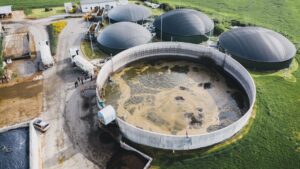
Hydroponics/aquaponics systems
are with aeroponics very efficient ways how to grow with a relatively small amount of land area with high efficiency in the water a lot of crops for the whole year. The environment they grow in must be stable, because the plants in these systems, are usually less resistant than soil-growing plants.

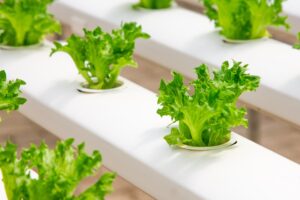
It does not really matter where exactly the minerals in the water mix (in which they are farmed) come from. They always must be in very easily disposable form for plants, because they lack mycorrhizae symbiosis to gain them the usual way. So, the fertilizer in the water must be specially treated. The problem is that even with recycling the residues from harvested plants and using nutrients from aquaculture it is always at the end necessary to get into the nutrient system some specific minerals the system otherwise lacks. For example, in aquaponics, practically 85 % of all nutrients can come from fish if they are on a special diet. But the rest (most usually potassium, iron and calcium) needs to be added from outside the cycle.
Fungi farms
are amazing technology with many options still theoretical but a lot of them are available now, like growing ecological furniture or building materials, subsidiser for meat and leather. And of course, just as a source of food. Especially the lignin-decomposing fungi are excellent in disposing of practically any organic matter even coal, plastic or fuel. But not always are they farmed on biological waste but many times on raw organic materials like straw, which could be used somewhere else.
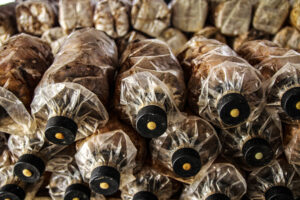
The fungi could be farmed for two resources. The reproductive part, fruiting body, usable for food, or the mycelium, usable for all the other usages mentioned above. They don’t need sunlight in most cases, and if they do it is for hormones production and in not big quantities. They are undemanding to grow, and they grow fast. Even though they release carbon dioxide as a by-product of their metabolism if they are farmed in an enclosed environment, it could be used for plants to grow faster.
Photobioreactors
are one of the ways how to catch atmospheric carbon dioxide. It is a specific bioreactor for phototrophic organisms, mainly for algae. That’s because when specific conditions are met, the algae in the photobioreactor will accumulate bio-oils which can be refined into oil for gastronomy and biopolymers or 3rd or 4th generation biofuels. It is required however to maintain the right level of minerals. Because plants need more than sunlight, water and CO2 to prosper. These bioreactors will actively catch the excessive carbon dioxide and fix it in the biomass of algae.

How will be Aqua-reaktor beneficial?
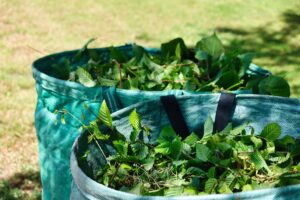
Our concept should be able to dramatically diminish the effects of the Jevons paradox, whereby better efficiency of sourcing some raw material through better technologies will result in greater consumption of this raw material. In our case, it is spoiled and generally discarded food, plus unused organic materials, such as cut grass and picked autumn leaves, etc.
Food is being consumed with small efficiency and a big part of it ends up as waste. And even without it, there is a lot of biological waste.
Our system seeks to exploit this waste and bring it back to the market in the form of the aforementioned, demand-driven products. And so, help to reduce the amount of greenhouse gases (like methane), by capturing them and exploiting them in our system. The aim is to increase the efficiency and greenness of our food and energy industry. Furthermore, make all continents/regions more energy and agriculturally self-sufficient.
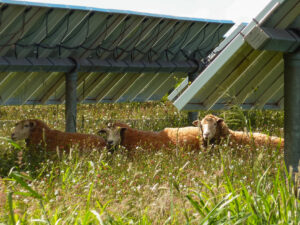
Where should the Aqua-reactors be?
As we have already mentioned virtually everywhere, where are people, but of course, it is not that easy. A balanced ratio of biowaste produced to the size of local demand is required for the optimal functioning of our system in the market.
And to that, adjust the size of the functional unit. Although all of this is still mostly on a theoretical level. We already have a clear vision and plans, about the places where the Aqua-reactors should be implemented.
These are:
Big cities
In big cities, we would have to solve problems with a lack of building space, but thanks to the vast amount of bio-waste and local demand, it would be a logical and lucrative place to focus on. Here, we could focus separately on two types of bio-waste. The food residue, grass leaves and etc., as well as the biowaste processed by the WWTP, there would be both sources of biowaste in such large quantities that it would be reasonable to consider more Aqua-reactors with a specific focus on particular bio-wastes.

Large agrarian units
Whether it be for animal husbandry, growing crops or a combination of both (the best option). The suitability of certain farms or agrarian complexes could be established after a simple calculation involving: the quantity and types of bio-wastes produced, distance from the nearest municipality, availability for infrastructure (how much it would cost to import materials), climatic conditions (extreme temperature fluctuations over a year, frequent tropical storms and other natural barriers would entail higher input and fixed costs)

Isolated human settlements
By this we mean mainly oil platforms, inhabited islands, and research centres cut off from civilisation (such as Antarctic research facilities). Any shortcomings in the local biomass sources are relatively simple to address. One way could be biowaste produced from ships which would top by occasionally. This might be a good enough solution in some scenarios. If it weren’t, we would increase the amount of produced algae and cyanobacteria by making more space for them and thus producing sufficient amounts of biomass on site. There would be little financial return to speak of here. But it would improve living conditions in such places, while making these isolated human „hideouts“ more self-sustaining, and thus in less danger in the events of difficulties in transporting supplies due to some external complications.

Space colonies
We believe that our concept would have applications beyond our world. Indeed, it could produce not only energy but also raw fuel and food, building materials from special mushrooms or creating polymers from bio-oils. And via this solution shrink the amount of necessarily delivered supplies. At the same time, at least partially, it would solve the problems of recycling waste and feeding astronauts/cosmonauts or space colonists. At the same time, it could supply people in space with tasty and species-diverse foods. This makes being in space more liveable and less mentally challenging.






